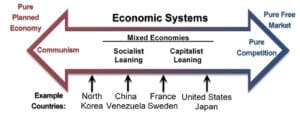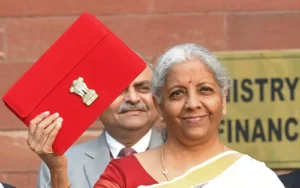10 mins read
Last Updated on February 23, 2025
Resize the Font:
Intro
The first thing that comes to our mind about the Congress government in Karnataka is that they don’t have any funds to spare for development. The Five Bagyas or Guarantees suck up all the money from the halls of the treasury faster than the vacuum cleaner ever did to clean the floors of the treasury.
If the situation is really as bad as they say it is, I just hope we don’t have any new potholes right in front of Vidhana Soudha. It would be way too embarrassing for Karnataka. With the media being there all the time, I guess the government wouldn’t leave any room for bad press. It will cover up the potholes, just like it covers up any bad press. What about the potholes a little bit far away from the Vidhana Soudha?
I guess the full picture of the state’s finances can be seen only when the CM as well as FM Siddaramiah presents the budget on 7th March.
Perception
Opposition parties, BJP and JDS, always want to build a perception among the public that there are no funds for development – not even a single rupee for development.
In Karnataka, BJP constantly accuses the government of spending all the money on freebies. If you look at the expenditure for all 5 Bagyas or Guarantee schemes, around 63% of allocation goes to one scheme – Gruha Lakshmi.
Rs 28,608 crore has been allocated towards the Gruha Lakshmi scheme, 63% more than the budget estimates for 2023-24.
On the other hand, the BJP has just won the assembly election in Delhi by using the poll promises of which the BJP has been complaining about other parties – Freebies. Modi tried to rebrand it as a “Revdi” culture to get the voters to reject this idea. But, It didn’t work. So, the BJP did what any other party has done by following the mantra – “If you can’t beat them, join them”. So, they embraced the freebies themselves.
Specifically, the BJP has similar direct cash transfer schemes like Gruha Lakshmi(by far the most expensive scheme in Karnataka) in many states in which it is in power. The scheme hands out up to 2500 Rs to every woman with BPL cards in various states:
Madhya Pradesh: The Ladli Behna Yojana provides ₹1,250 per month to 13 million women. The initial amount was ₹1,000 and later increased.
Maharashtra: The Ladki Bahin Yojana provides ₹1,250 monthly to 24 million women.
Haryana: The government provides ₹2,500 per month. However, there have been uncertainties and delays in the implementation of the Lado Laxmi Yojana, with no installments disbursed as of January 2025, despite promises made.
Delhi: The BJP promised ₹2,500 per month to women if elected in Delhi167. Chief Minister-designate Rekha Gupta stated that the first installment would be provided by March.
In the long run, I do agree that parties out-promising each other with freebies/welfare schemes to win elections is not sustainable for any government’s finances. But, the perception that only Congress is doing it or Congress is doing it more than others is simply not true.
Reality
Congress MLA Raghavendra Hitnal said,
“Several programmes/projects have been formulated for the village (Kunikeri). But the works are moving at a
sluggish pace due to the implementation of five guarantee schemes by the state government.”
I think it is very unlikely there was any politics behind his statement because he was a close aide to CM Siddaramiah. Why would he rock the boat unless the concern was real for him?
At the same time, the state government has raised the fund allocation to every MLA from 10 crores to 15 crores.
Karnataka Home Minister G Parameshwara said on Friday that the state government has decided to increase MLA funds from Rs 10 crore to Rs 15 crore each to the Opposition legislators unlike the previous BJP government, which discriminated against the Congress lawmakers in providing grants.
Was there no allocation for roads and bridges as the opposition parties make it seem?…….. Of course, there was.
Rs 7,212 crore has been allocated towards capital outlay on roads and bridges.
In the next few sections, we will see if there is any truth to the perception or even reality for that matter. These numbers that were mentioned in the previous paragraphs could very well be very real on paper. But, how about outside the paper? what do they mean? we will see in the next sections.
All spending are not created equal
There are two kinds of expenditure. One is revenue and the other one is capital. This is based on the nature or impact of the expenditure.
Expenditure can also be classified into 2 types based on Utility. One is useful and the other one is wasteful. Of course, we want to fund the projects that are useful. Whereas, we want to cut or reduce the funds to the projects that are wasteful. This is common sense. There is also an unpleasant fact that we can never reduce the wastage to 0% in any project.
In hindsight we can ask ourselves, why were the wasteful projects created in the first place? this is a good question. There are many answers to it. It is not very straightforward to estimate in advance whether a project will be as useful as we thought it would be. There are always many factors to consider. Many times, there are at least a few factors that are either left unconsidered or undervalued its importance. Maybe, it made sense one time, but not anymore. Still, it was never assessed again and shut down.
There are also other times when the project is initiated to simply steal the money from the government. Irrespective of which party is in power, we have seen this happening with the white-topping of roads in Bengaluru.
The lifespan of white-topped roads, which involve applying a layer of Portland cement concrete over existing bituminous pavement, is generally estimated to be between 20 to 25 years. The cost of white-topping a kilometer of road is as high as 16 crore rupees. When you can make crores of rupees from one kilometer of road, I guess it is hard to say no to it.
The intention behind the BBMP’s white-topping project is to improve road durability, but there are concerns that road selection may be driven more by financial incentives than by actual need.
White-topping the 2.2-km stretch between Mahatma Gandhi statue (near the cricket stadium) and Trinity Circle – which is relatively in good condition – is estimated to cost a whopping Rs 45 crore.
I will leave these two instances to your judgment whether it was actually driven by financial incentives or actual need.
It is not like the government never understands if there is any waste in its expenditure. There are instances where we can find the government waking up and taking action to cut wasteful spending. The best example is converting truly ineligible 22 lakh BPL cards in Karnataka to APL cards so that the cardholders will stop receiving 2000 Rs under Gruha Lakshmi Scheme. This way Siddaramiah-led congress government will save 5424 crore rupees every year. If you are interested to read more about it I have written another blog about it – click here.
All funding cuts are not created equal
Just like there are useful and wasteful spending, there are useless and harmful funding cuts as well. Of course, the corollary of spending is funding cuts.
We begin with funding cut that we are already familiar with, which is allocation to roads and bridges. Following is what we saw before.
Rs 7,212 crore has been allocated towards capital outlay on roads and bridges.
This number alone in the vacuum doesn’t tell you much. We should compare it to the previous year’s allocation to see whether allocation has been reduced or not. Here is last year’s allocation:
Rs 8,208 crore has been allocated for capital outlay on roads and bridges.
Now, we can clearly see the funding has been reduced by almost 1000 crore rupees, and in terms of percentage, it is down by almost 12.5%.
One can see why this has to be done to fund 5 guarantees that people badly need. There are still many who are struggling every day to come out of the once-in-a-lifetime Covid recession and are still suffering under the K-shaped recovery that the economy had so far since Covid. But, the next one is inexcusable.
Karnataka govt slashed funds for differently-abled by 80%. I would strongly suggest you read this post published on the Deccan Herald website. It is very horrifying to read the ramifications of this policy. Last year, the government had allocated 53 crores, but this year the allocation has been cut down to just 10 crores. If this is not inhumane, I don’t know what is.
CM Siddaramaiah repeatedly claims he is for the downtrodden because he always fights for social justice. I know that the physically disabled community is not part of the AHINDA movement/coalition. It doesn’t mean that the empowerment of the physically disabled is not part of social justice.
Another thing that has seen big funding cuts lately is Universities, specifically the closure of nine newly established universities, citing financial constraints and inadequate infrastructure. These universities, created during the BJP government’s tenure under a “One district, one university” policy, include Hassan University, Chamarajanagar University, Haveri University, Kodagu University, Koppal University, Bagalkot University, Maharani Cluster University Bengaluru, Mandya University, and Nrupatunga University. Only Bidar University will remain operational as it was found to be financially viable and functional.
The cabinet sub-committee was formed following a report by the Karnataka State Higher Education Council estimating that each new university would require Rs 342 crore for establishment and operation over the first five years. This excludes the cost of land, which averages 200 acres per institution.
Most of these universities lack their own campuses, and are functioning from the premises of the erstwhile postgraduate centres. Basic infrastructure is sorely lacking, and some universities cannot even afford vehicles for their vice-chancellors. Affiliation fees, a primary source of funding, cannot support these institutions, with the Chamarajanagar university, for instance, hosting only about 20 affiliated colleges.
Not every district needs to have a University, especially if it is not sustainable. Instead of that, I would like to see the quality of education in the existing colleges improve. According to NIRF, Karnataka is already in first place in India in the density of colleges.
We need to invest more in existing colleges and higher education. That is what we are lacking in. Neither the central nor the state government is doing it. I hear a lot of rhetoric from union ministers including FM Nirmala Sitharaman about skill development, but the allocation remains only 0.098% of the total budgeted expenditure in 2025.
The Congress government in Karnataka is not doing better either. Its allocation to higher education is less than in other states.
Karnataka additionally set aside ₹5,129 crore for higher education within the same time frame. According to the study, Tamil Nadu contributed ₹7,237 crore, Bihar contributed ₹9,666 crore, and Maharashtra contributed ₹11,421 crore.
This makes me wonder whether we will really have demographic dividend or will it lead to demographic disastaer.
Conclusion
To understand the usefulness or wastefulness of a project or a scheme, we have to look at them one by one. We can not jump to any conclusion. In general, allocating for capital expenditure might be better than allocating for welfare schemes, but it doesn’t say anything about the quality or outcome of the expenditure as we have seen with the example of white-topping in Bengaluru.
This doesn’t mean that the Karnataka government is not experiencing a funding crunch for important projects and programs. In fact, it does. In this blog, we have seen severe funding cuts to higher education and programs to support persons with disability.
So, with CapEx, we need to look at productivity, growth, employment, etc. With welfare schemes, we need to look at consumption and empowerment. There can always be waste in both kinds of expenditure. So, we need to judge case by case, project by project, and program by program – whether it has received enough or excessive funding.




